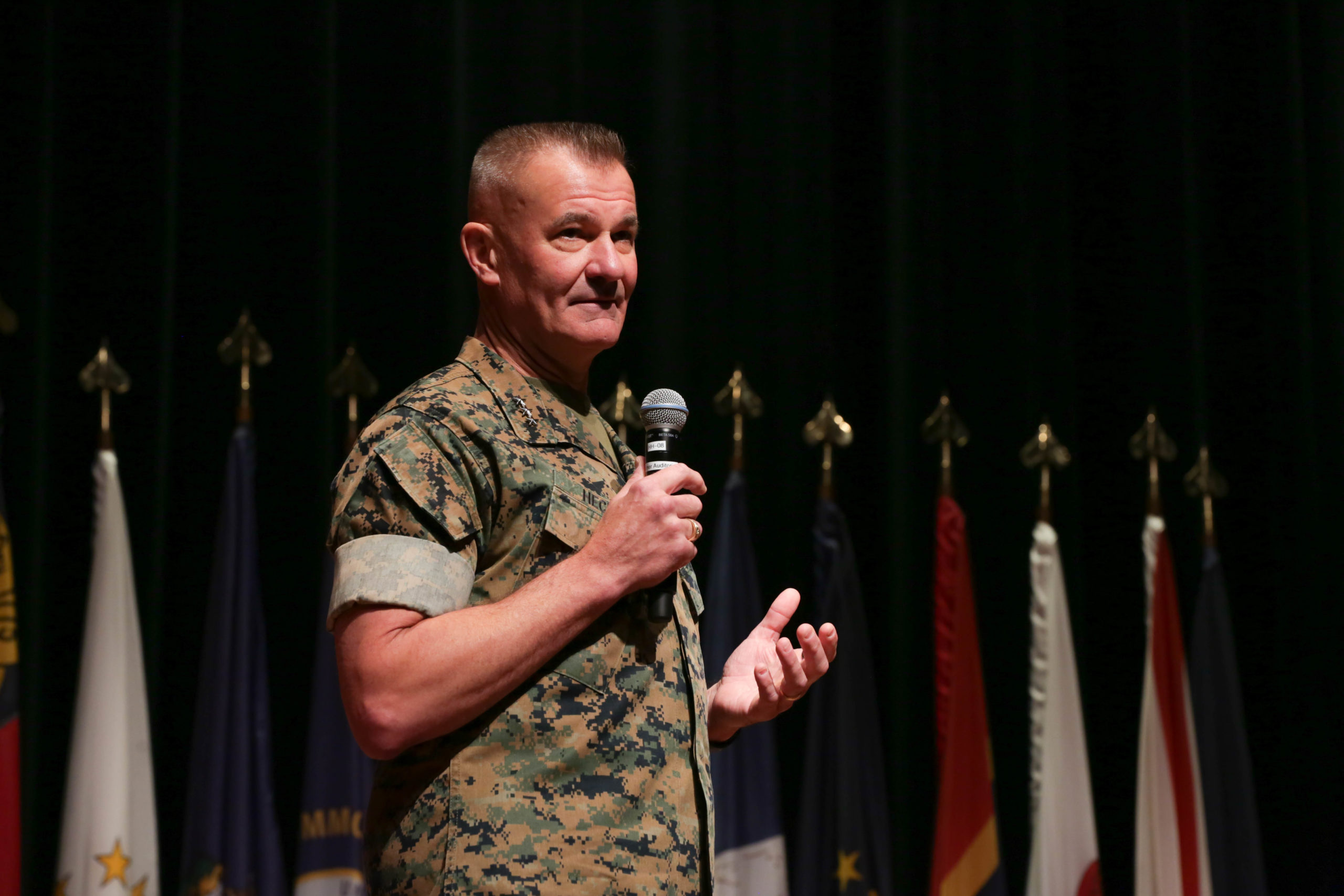The Perspective of LtGen Heckl: Exit Interview
I had the chance recently to meet with LtGen Heckl, the Commanding General, Marine Corps Combat Development Command, and the Deputy Commandant for Combat Development and Integration, at his office in Quantico. He is retiring from the USMC this month, so this is my exit interview with him.
As such, I asked him to look back at his time with the command and the general challenge of force structure change to deal with the evolving global military set of challenges.
He emphasized three key developments which have shaped his time at the command.
First, he underscored that the U.S. military and its allies are facing a revolution in military affairs. When that phrase was coined, it referred to the significance of precision warfare leading to an ability to enhance force capability to defeat an adversary who did not have such capability.
When LtGen Heckl spoke of his understanding of the current RMA, he underscored the coming of autonomous systems and machine learning as infusing change in the force and requiring the force to adapt and incorporate changes associated with these developments into on ongoing force design.
Such a change is also associated with socio-political and economic changes, and for this variant of the RMA, it is unfolding in the context of the emergence of significant authoritarian powers and movements, and the need for liberal democratic allies to find more effective ways to work together rather than just relying on a single global power which was the United States and its military.
This RMA is associated with the opportunity and necessity for the United States and its allies to more effectively collaborate in dealing with proliferating threats and challenges from authoritarian states and movements.
That led to his second change. He underscored the importance of the U.S. military working with allies. As he put it: “You will never see me saying JADC2. I always say CJADC2 or coalition C2 and the need to work together from a common operating picture.”
The Marine Corps now integrates allies and partners into exercises and experimentation more frequently, has expanded its coalition training opportunities, and is working to create relationships that support a more globally dispersed logistics framework.
Third, there is an emphasis on speeding up the incorporation of technology into the force.
Here the emphasis has been upon introducing prototypes into the force and having the warriors determine their utility and, if demonstrated as such, finding ways to incorporate that technology.
As LtGen Heckl said, “I am not focused on multiple FYDP acquisitions; I am looking for ‘the future is now’ capabilities.”
This includes collaborating more closely with industry, navigating a complex acquisition process to field technologies sooner and changing training to ensure tactical proficiency at the lowest level. He underscored the central significance of C2 modernization, notably when distributing the force.
A key part of the strategic redesign of U.S. and allied forces is force distribution for survival, but C2 is critical to tie those forces together to get the kind of lethality the force needs to prevail.
LtGen Heckl highlighted that two prototype units have been developed and used by the Marines to provide for C2 at the tactical edge. These two TENX or tactical edge node expeditionary units have provided for movement of data for C2 successfully and could be adopted more generally in the force.
LtGen Heckl also mentioned that the Army and the Marine Corps are pursing rapid acquisition of attack and logistics drones and autonomous systems. They are programs built by different defense companies, but the two services are cooperating in understanding the common possibilities of use.
The Marine Corps has been transformed by its air capabilities, from the MV-22 Osprey to the F-35 Lightening II to the CH-53 King Stallion. The new RMA leverages these platforms and their capabilities in various ways. Much of the dynamic changes are associated with payloads and their rapid upgradeability associated with more attributable platforms co-joined with the payloads.
For example, TENEX can be carried by an Osprey, and the speed, range and ability to be at height allows it to be available for a variety of combat capabilities that can be clustered together by a common C2.
Additionally, the ability of the global F-35 fleet to share common data and provide an ISR “blue blanket” is a key part of being able to leverage new capabilities generated by the new RMA.
But it is about force structure change within strategic redesign of U.S. and allied military policies and the technological advances providing expanded capabilities that allow the Services to meet the challenges of the new landscape.
Featured Image: Lt. Gen. Karsten Heckl, the former commanding general of Marine Corps Combat Development Command and Deputy Commandant for Combat Development and Integration, gives his remarks at a change of command on Marine Corps Base Quantico Aug. 9, 2024. During the ceremony, Lt. Gen. Heckl relinquished command to Lt. Gen. Eric E. Austin.
(U.S. Marine Corps photo by Cpl Matthew Krogull)

